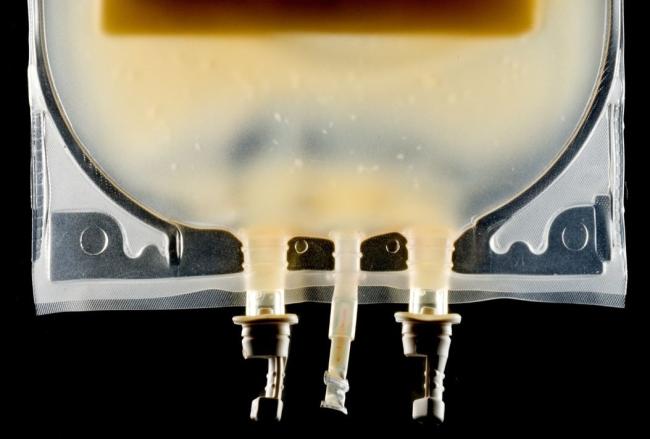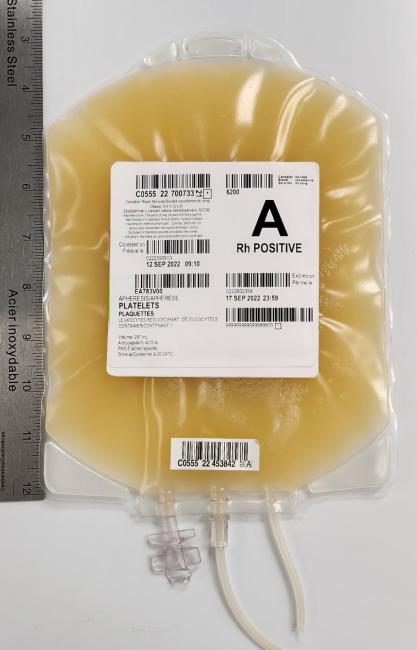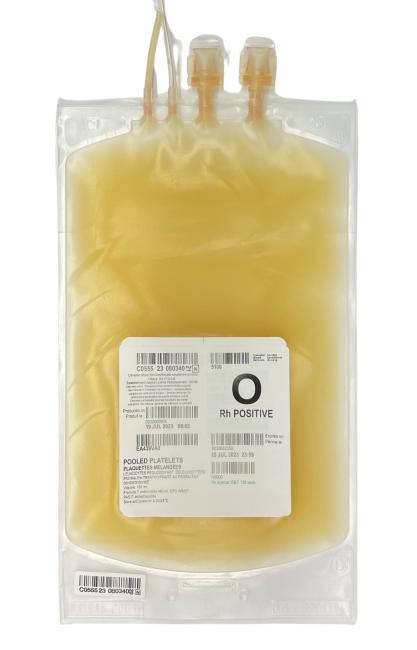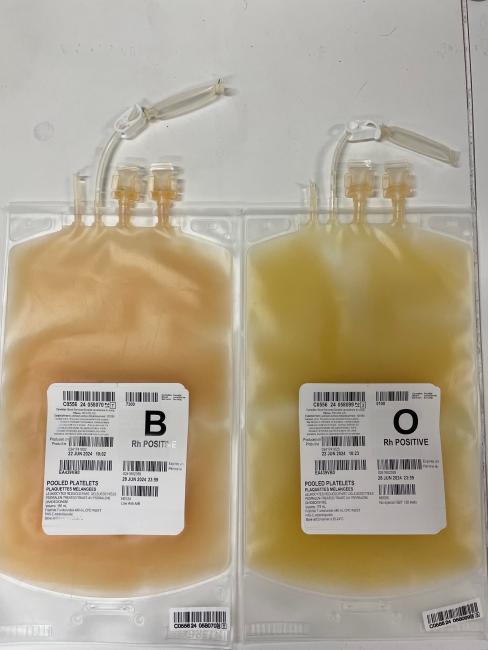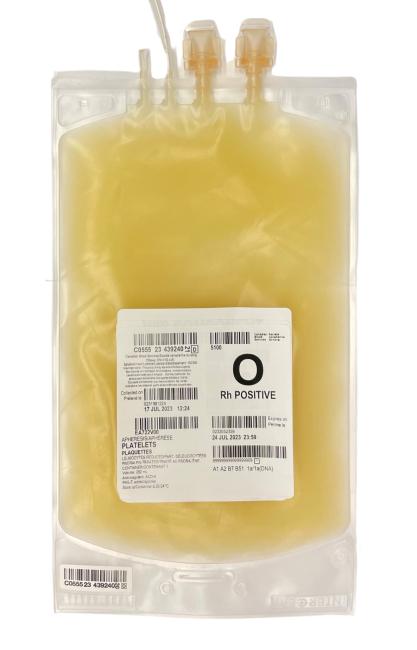Platelets: Particulate matter
Colour legend
Example(s) of typical appearance
Example(s) of a change in appearance
Particulate matter can be the result of blood collection and/or component manufacturing processes. There are several categories of particulate matter that may be found within platelet units:
- Clots and fibrin strands
- Clots may appear as white and opaque masses that do not dissipate with gentle manipulation.
- Clots and fibrin strands result from the activation of the clotting processes and can be a mixture of clotting proteins (including fibrin) and platelets. Blood is collected and processed in bags that contain anticoagulants to inhibit the clotting processes. Blood components containing clots and / or fibrin strands should NOT be transfused and should be reported to Canadian Blood Services.
- Aggregates
- Aggregates may appear as small white and opaque masses that generally dissipate with gentle manipulation and/or agitation.
- Aggregates have been reported in some pathogen-reduced platelet components. Platelets containing visible particles are not inferior to particle-free concentrates.
- Placing units in landscape orientation on an agitator may help reduce aggregate formation.
Image
